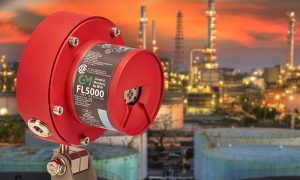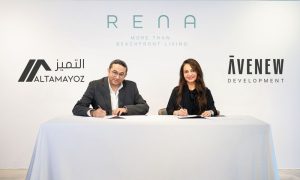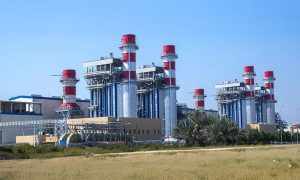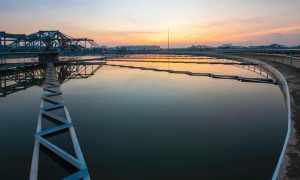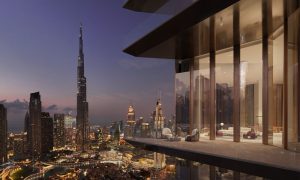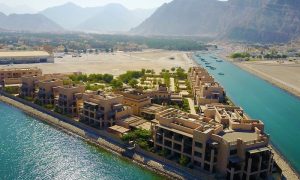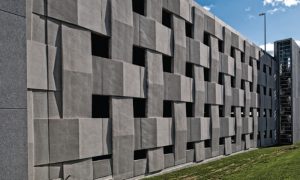Mecca crane collapse: Lessons from the tragedy
Will Saudi Arabia’s construction health and safety laws change?

This article was published in the October edition of Big Project ME
The tragic collapse of the tower crane in the Holy City of Mecca, which killed more than 100 people in the Grand Mosque, has sent shockwaves throughout the GCC construction industry and put the spotlight on construction health and safety standards in the kingdom.
With early investigations into the tragedy indicating that the crane could not withstand the intense winds despite being fixed to the ground with four 1,000t foundations, questions are now being asked about whether enough is being done to ensure that internationally recognised health and safety standards are followed in Saudi Arabia.
During a visit to the site of the accident, King Salman promised to open a public investigation into the causes of the accident and ordered the Mecca project contractor, Saudi Binladin Group, to ensure the safety of all the other cranes at the site.
“My visit today is to check what had happened and know how they can rehabilitate the site again. We will open an investigation into the causes of the accident and then announce the results to the public,” the monarch said at the time.
In the fallout of the accident, the King ordered that Saudi Binladin be barred from taking on new projects in the Kingdom while the investigation is ongoing. In addition, executives from the construction giant have been issued with a travel ban, Saudi state media reported.
The ban covers “all members of the board of directors of Bin Laden Group, Eng Bakr bin Mohammed bin Laden, senior executives in the Group and others connected with the project,” the reports added.
Given the scale of the disaster and the concerns it raises about the lack of health and safety checks on-site, perhaps it is time to look more seriously at the standards of health and safety on construction sites in the country.
In an interview with Big Project ME, Rob Cooling, head of Health and Safety at WSP | Parsons Brinckerhoff Middle East, says that a health and safety culture needs to be cultivated in the kingdom if tragedies like the one in Mecca are to be averted.
“Health and safety needs to be embedded in the ethos of all companies working on a project, no matter where it is, which is why a great deal of our focus is on aiding the entire project team to take a collaborative approach,” he explains.
Kez Taylor, CEO of Dubai-based contractor Al Jaber LEGT Engineering and Contracting, agrees with Cooling, pointing out that if a health and safety culture is to truly embed itself in a country, then it needs to be fully embraced by construction firms operating within the market.
“You can’t really influence others, you can only influence yourself. I think what you’ve got to do is set an example through the way that you operate, and if you do that, hopefully you have a positive influence on others.”
The formation of a contractors association by the Saudi government could be one step in the right direction. While the Saudi Association for Contractors is expected to handle matters related to contractors’ business, including the issue of visas and permits, it could also affect how companies under its umbrella view issues around health and safety.
“The way to get it [HSE] better regulated is to make sure that you regulate it for the country and industry,” points out Taylor. “I think that the local authorities should set certain criteria, in terms of ensuring that certain practices are adhered to. There’s a massive difference across the construction industry in the region.”
With the board of the Saudi Association for Contractors likely to be made up of executives from the construction industry, engineers and a representative from the Saudi Arabian Trade Ministry, it seems like its formation could be a perfect opportunity for the Kingdom’s industry to introduce real reform.
However, for any meaningful reform to take place, there must be adequate government involvement, and to this end, the Saudi government could learn from how the UAE enforced health and safety regulations in the local construction industry.
Citing the enforcement of the mid-day work ban, Taylor explains that local authorities strongly police the industry, conducting regular site inspections across the country to ensure that the rules aren’t being flouted. Companies found breaking the law are fined heavily, with follow-up inspections to check for improvements.
“The ruling here was made, and it’s been adhered to, in general. In this part of the world, it’s good [to have that]. In terms of health and safety, something similar should happen as well,” Taylor says.
This is also where a consultant on a project can play a strong role. By ensuring that the rules and regulations are followed on-site, they can lead the way on health and safety implementation.
“It’s also very important that the systems and procedures that govern health and safety are actually being implemented at a site level on a day-to-day basis. We have seen some good progress and some sectors, like oil and gas for example, are very strong and the construction industry is learning from them,” Cooling concludes.
An expert view on the crane collapse: David Semple from Manitowoc Cranes
Crane design standards regulate the maximum admissible wind-speeds under which a crane can operate, as well as the maximum wind-speeds the crane is designed to withstand out of service.
These wind speeds can vary depending on the product (tower crane / crawler crane / mobile crane) and on local regulations (for example, France passed some regulations after the December 1999 storm which significantly increased the out-of-service design wind-speeds for tower cranes for most areas of the territory).
So for every crane model, there is a certain amount of wind above which the crane must not be used, and when it should be put in ‘out of service’ position as per manufacturer’s instructions (weather-vaning position for tower cranes, boom-down for crawlers, boom fully retracted for mobiles and so on).
There is unfortunately no safety system on any crane that can insure 100% that this is done. Cranes should be fitted with an anemometer measuring the wind-speed (at the highest point of the crane, not at ground level where wind can be significantly less) and those devices can do a number of things to warn the job-site (sound and light alarms, cut-off of some crane functions, email alerts, etc).
But there will always be the need for human intervention to put the crane in safe position in high winds – for example, to release the slewing brakes on a tower crane and put the hook in the correct position, or to boom down a crawler crane, or to retract the boom of a mobile crane.
